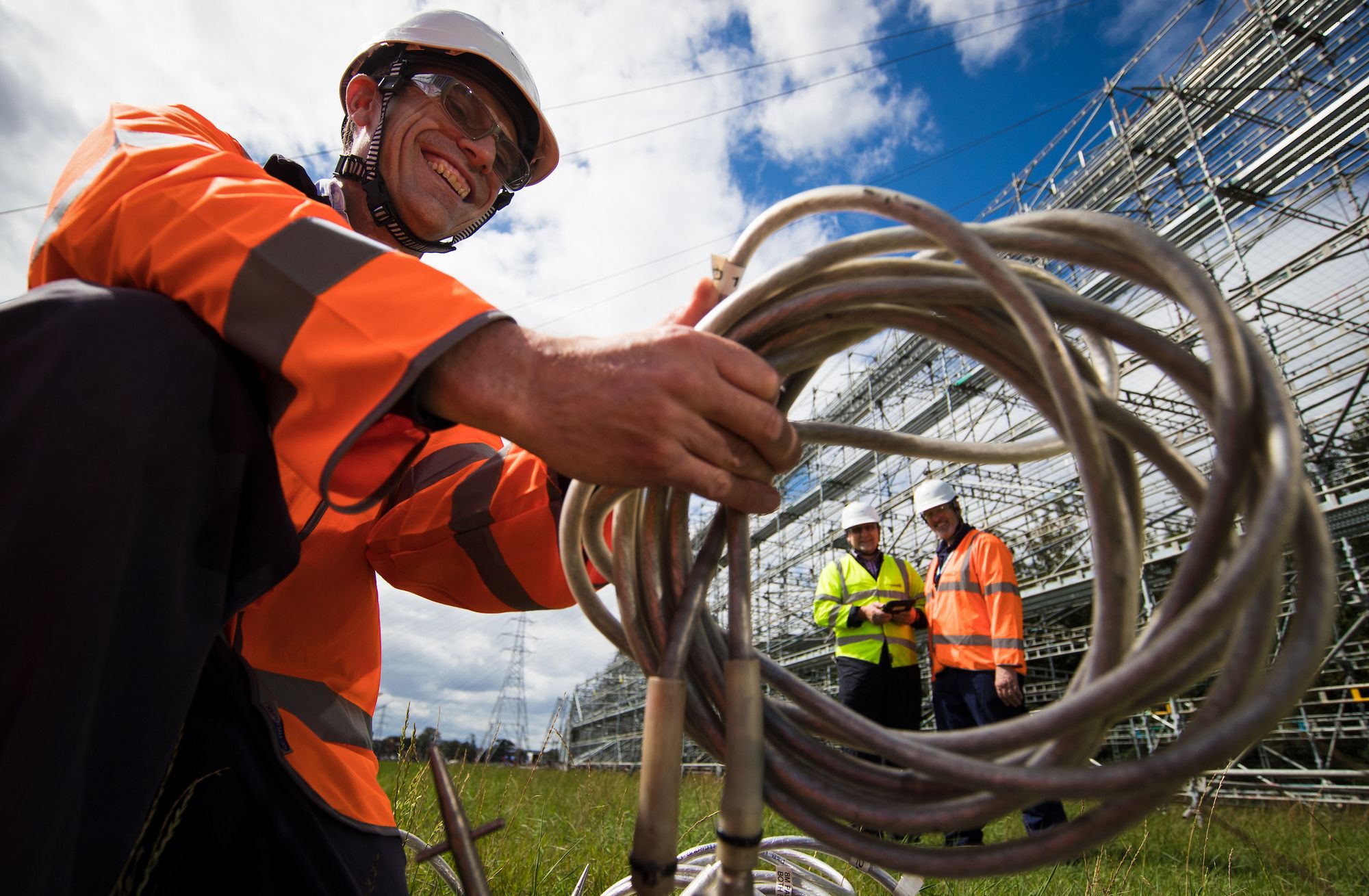A towering relocation
Colleagues in Worcester overcame restrictions relating to a registered battlefield, common land, a flood plain and the identification of protected species and flora and fauna in order to successfully move a 132kV tower.
When the team were approached by Worcestershire County Council to move a dual circuit 132kV section tower 50 metres to make room for the Southern Relief Road widening scheme, they had no idea of the complexities that they would face.

Right from the start, there were complications and gaining wayleaves for the move was complicated by several factors as Wayleave Specialist Mark Edwards explains.
“The site was not only on the flood plain of the River Severn, but is also a registered battlefield – the Battle of Worcester took place there in 1651 – and it is registered common land with 76 common grazers who all had to be consulted as well.
“We had to prepare detailed contingency plans in case the site flooded, including special foundations to protect the scaffold legs in the event of a flood. In fact, the site flooded just a few weeks before the work started, but once underway, it ended up being the driest start to a summer since 1961.
After 12 months of planning, work on site began in June 2018. Projects Engineer Chris Mundy, who managed the project, said:
“The proximity of the battlefield meant that we had to have an archaeologist present during all the excavation work, in case of any finds of an archaeological significance. Works were halted briefly when an ancient looking shard of metal was found, however, this turned out to be just a fragment of a screw from the farmer’s plough, so we were allowed to carry on.
“The identification of grass snakes, slow worms, bats and badgers – all protected species - as well as Himalayan Balsam and Monkey Flower which are invasive species of plant, meant precautions had to be taken to avoid disturbing them and encouraging the further spread of the weeds.”
But the history of the site and its inhabitants weren’t the only issues the team had to contend with, as Primary System Design Engineer Martin Southall explained. “To enable the new tower to be constructed, we decided to use a temporary Lindsey mast so that we could transfer one of the two circuits off the main tower to allow work to be carried out under single circuit outages. This reduced the system risks during the project and helped to secure supplies to the 18,500 customers fed from Malvern.
“Extensive scaffolding and netting had to be built across the A4440 to allow the works to take place without closing the road or disrupting the traffic flow. To complete the works safely, nearly 300m of scaffold was erected on each side of the road. This consisted of over 24,000 components weighing more than 210 tonnes and took 16 men 30 days to construct. We also needed to import 330 tonnes of stone for the tower foundations.
“We had to have three overnight road closures involving an extensive diversion route through Worcester city to allow us to hang the protective netting over the road. The effects of this were mitigated by only closing the road at night and during the early hours of the morning. Fortunately we managed to remove the netting in just one night, two nights ahead of schedule,” said Martin.
During the works, up to 20 scaffolders were on site and 16 contract linesmen were involved in erecting the new tower and dismantling the old one. The work progressed well over the summer months, and was expected to finish ahead of schedule as Powerlines went to print.
- About Us
